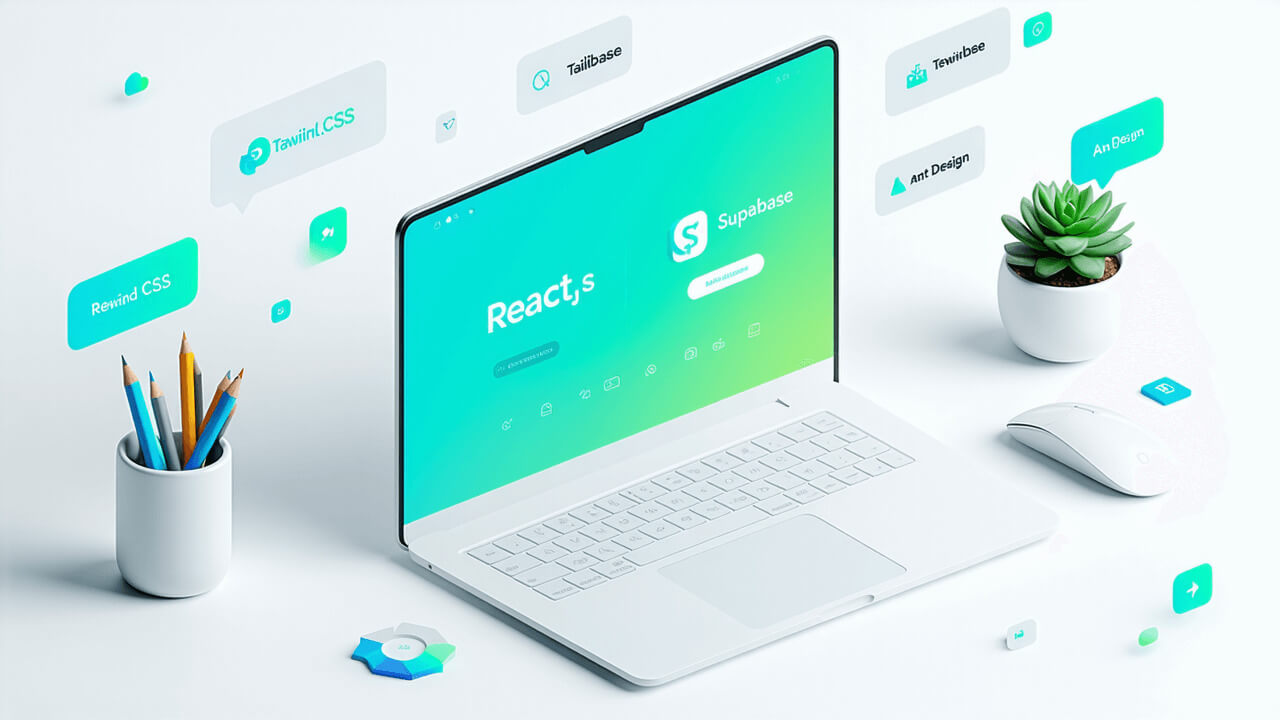Mastering Model Context Protocol (MCP): The Future of AI Tool Integration

Model Context Protocol (MCP) is a rapidly evolving open standard designed to unify how tools and integrations are made available to AI applications. Much like USB-C standardized hardware connectivity, MCP standardizes software-level connectivity between AI models (clients) and tool bundles (servers). The goal? Build once, use anywhere.
Whether you are working with Claude, Cursor, Windsurf, or any emerging AI host app, MCP allows you to build server-side logic just once and expose it to multiple LLM interfaces in a consistent, declarative way.
Why MCP Matters: Standardization and Scalability
Before MCP, every AI app had a different way to integrate external tools, leading to duplicated work, fragile connections, and limited scalability. MCP changes the game:
- Standard Interface: Tools are declared with metadata (name, description, parameters) and exposed via MCP-compliant servers.
- Plug-and-Play Reusability: Once you build an MCP server, it can connect to any client that supports the protocol.
- Tooling Ecosystem: Dozens of open-source servers already exist—from weather APIs to task managers—and can be remixed easily.
- Forward Compatibility: MCP is evolving to support remote hosting, authentication, and registry services—expanding its enterprise-grade potential.
The Core Architecture: Clients, Servers, and Tools
At the heart of MCP are two roles: the client and the server.
- MCP Server: Hosts tool logic, resource definitions, and prompt templates. Built using SDKs (TypeScript, Python, Java).
- MCP Client: Any AI app that implements the MCP protocol. Examples include Claude Desktop and Cursor Agent.
How It Works:
- You build an MCP server exposing tools like "getWeatherForecast".
- A client like Claude loads your server via a simple config or CLI.
- The LLM evaluates the user prompt and decides which MCP tool to invoke.
Because clients vary in support (some support only tools, others support prompts/resources), your server is reusable across multiple environments.
Key Components of MCP: Tools, Resources, and Prompts
MCP servers expose three main building blocks:
a. Tools
Functions that can be called by LLMs. Example: "getForecast" or "getAlerts" from a weather API.
b. Resources
Static or dynamic datasets accessible to LLMs. Example: a team list from a project management API like Linear.
c. Prompts
Reusable templates or workflows for structured input. Example: a “Create Task” prompt that includes title, description, and priority.
These components are declared using the MCP SDK and exposed to the client’s interface—enhancing the capabilities of the LLM.
Setting Up Your Environment for MCP Development
To build MCP servers, ensure the following setup:
- Node.js (v16 or higher, preferably v20+)
- NPM (Node Package Manager)
- Cursor Editor or VS Code (for ease of development)
Run the following commands to verify:
node -v npm -v
If you’re missing Node or NPM, install from nodejs.org.
Building Your First MCP Server: A Weather API Example
Let’s walk through building a weather forecast server that exposes two tools: "getForecast" and "getAlerts".
Step-by-step:
-
Create a project folder:
mkdir weather-server && cd weather-server npm init -y -
Install dependencies:
npm install model-context-protocol zod npm install -D typescript @types/node -
Create a "tsconfig.json" and "index.ts" in a "/src" folder.
-
In "index.ts", initialize your server:
import { Server } from "model-context-protocol"; const server = new Server({ name: "weather", version: "1.0.0" }); -
Add API logic using "fetch" and register tools using "server.tool(...)".
This small example already sets you up to scale across any MCP-compatible client.
Registering MCP Tools with TypeScript SDK
MCP tools follow this format:
server.tool(
"getForecast",
"Fetches weather forecast for given lat/long",
{
latitude: z.number().min(-90).max(90),
longitude: z.number().min(-180).max(180),
},
async ({ latitude, longitude }) => {
const res = await fetch('https://api.weather.gov/points/$ {latitude},$ {longitude}');
return res.json();
}
);
- Name & Description help the LLM decide which tool to call.
- Zod schema ensures input validation.
- Callback Function executes the tool logic.
LLMs interpret tool definitions and automatically call them when the user’s query matches the tool's intent.
Integrating Prompts and Resources
Prompts and resources are similarly declared:
Prompt Example:
server.prompt("createTaskTemplate", {
description: "Create a task with fields",
variables: ["title", "description", "priority"],
template: "Create a task titled {{title}} with description {{description}} and priority {{priority}}."
});
Resource Example:
server.resource("teams", async () => {
return fetch("https://api.linear.app/teams").then(res => res.json());
});
These features unlock templated workflows and data injection into model context—a powerful combination for AI productivity.
Connecting MCP Servers to Claude and Cursor
For Claude Desktop:
-
Open "Claude > Developer Settings > Edit Config".
-
Add:
"servers": { "weather": { "command": "node", "args": ["<path-to-your-compiled-index.js>"] } } -
Restart Claude.
For Cursor:
-
Go to "Settings > MCP Settings > Add New MCP Server".
-
Provide name, type ("command"), and command:
node <path-to-your-compiled-index.js> -
A green dot indicates success.
After that, start a new chat, and the LLM will call tools like "getForecast" when prompted (e.g., “What’s the weather in Miami?”).
Debugging and Deployment Best Practices
-
Rebuild After Every Change:
npm run build -
Restart Clients after config changes.
-
Use Logs and ".catch" blocks for API errors.
-
Use ".gitignore" to exclude "node_modules" and "build".
Deployment is currently local-first, but hosted servers with auth and registries are on the 2025 roadmap.
Future of MCP: Remote Servers, Authentication & More
MCP is still young but rapidly evolving. Here’s what’s on the horizon:
- ✅ Hosted MCP Servers with public URLs
- 🔐 Authentication support (OAuth, tokens)
- 🌐 MCP Registry for discoverable tools
- 📜 Expanded SDKs for Python, Java, Node
- 🧠 Agent-friendly prompts and templates
This protocol is becoming a core layer in the next-gen AI development stack, driving ecosystem-level interoperability.
Final Thoughts and Strategic Applications
MCP is more than a developer trend—it’s a foundational shift toward modular, scalable AI development. Whether you're an indie developer building AI-first products or an enterprise integrating tools into multiple AI agents, MCP offers the framework to build once and use everywhere.
Next steps for you:
- Clone example MCP servers from GitHub
- Build your own tools (e.g., task manager, email summarizer)
- Plug them into clients like Claude, Cursor, Windsurf
- Start shipping more powerful, AI-native features—faster
Related Articles

Next.js 14 Features That Will Change Your Development Workflow
Explore the latest features in Next.js 14 and how they can improve your development experience and application performance.

React.js and Supabase Masterclass – Build Full-Stack Apps from Scratch
Get started with full-stack development using React.js, Supabase, Tailwind CSS, and Ant Design. Learn authentication, file uploads, and deployment.